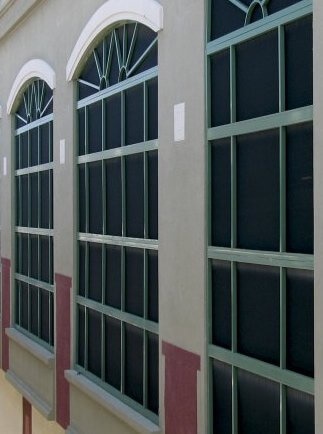What are engineering calculations?
Engineering calculations (or “calcs”) are a series of advanced calculations used to determine worst case scenario(s) and possible risk factors for aparticular railing system. By working out the calculations, engineers can determine what will and won’t work in the way of loading requirements.
What are engineering calculations?
Below are four of the top reasons engineering calcs for architectural railings are beneficial for everyone involved in a construction project.
Engineering calculations ensure:
- The safety of the railing
- Code and spec compliance and that loading requirements are met
- That the correct fasteners and structural members (top rails/posts/infill) are being used
- Peace of mind for the customer
What are some considerations that engineers must take into account when doing the calculations?
- Stable Mounting Conditions: Calculations assume that the railing is being mounted to a safe, stable, suitable structure. This means that someone within the project team must take into account all structural elements (ex. concrete psi) and verify that the railing is going to meet all requirements (i.e. edge distance, wood blocking to avoid pullout, etc).
- End User: Is the end user going to be modifying the railing in any way (for example – will the end user in a high-rise residential facility be hanging plants off of the top rail of their balcony railing)? If so, this should be taken into account when preparing calcs, as certain items will add to the dead load.
- Location: Location matters. For instance – is the railing going to be installed on a college or university campus? Railings around higher-ed facilities take a beating from students sitting or hanging on rails at all hours ofthe day. This means that on-campus railing systems may require a different loading than railings for a senior citizen-type of application.
Are calculations always mandatory for railing systems?
Providing engineering calculations is a service that most railing fabricators offer to customers. Although calcs are not always required by the owner or architect, they are highly recommended for the safety and security of end-users, such as apartment tenants or hotel guests. In government applications, engineering calculations are always required.
What about engineering calculations for pre-engineered, “off the shelf” railing systems?
If you are purchasing a pre-engineered system, like this one or railing panels/components from a big box store, then it’s safe to assume that calculations have already been completed (known in this instance as “pre-calculations”). These pre-calcs should be taken into account when the building has its own unique mounting or loading requirements.
Bottom Line?
- Just because a railing is drawn a certain way, doesn’t mean it will meet loading requirements. It’s always best to have engineering calcs completed to prevent any type of life safety issue.
- Remember, no two situations are alike. If a railing system meets loading in one situation, that doesn’t necessarily mean it’s going to work in another.
to learn more about glass railing, aluminum railing and stainless , CLICK HERE.




























